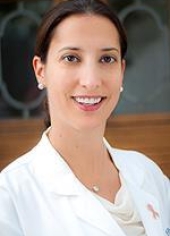The Truth about the Benefits and Risks of Annual Screening Mammograms
The following article was written by Elissa Price, M.D., a specialist in Breast Imaging at UCSF Medical Center at Mount Zion.
An article entitled ‘Tipping the Balance of Benefits and Harms to Favor Screening Mammography Starting at Age 40 Years’ was published in this May’s edition of the Annals of Internal Medicine. The article addresses the highly controversial issue of breast cancer screening with mammography in women under 50. Using complex mathematical models, the authors suggest that only high-risk women aged 40-49 should undergo screening mammography, and only every other year. Although interesting, even the authors acknowledge the study does not refute two critical points:
1. Screening mammography reduces breast cancer mortality rates (in randomized trials and nationwide screening programs)
2. Screening women in their 40s results in a 15% mortality reduction (according to a meta-analysis of 8 individual trials)
In other words, mammography saves lives in women aged 40-49.
As per the teachings of Sun Tzu, let us not underestimate our foe. In 2012, approximately 39,000 American women in the 40-49 age group will be diagnosed with invasive breast cancer. Over 4,000 American women aged 40-49 will die of breast cancer this year alone -- 4000 of our mothers, sisters, daughters and friends.
As suggested by its title, this study assesses benefits and harms of screening mammography - the authors’ definitions of ‘benefit’ and ‘harm’. “We defined harm as the number of false-positive results and benefits as the number of breast cancer deaths averted and number of life-years gained.” By comparing a false positive mammogram to a death averted, the study implies that these outcomes are somehow similar in value. This demonstrates a huge philosophical difference between the study and our Institution. Although the distress caused by a false positive mammogram is real, UCSF Breast Imaging believes that averting the death of a mother, daughter, sister or friend far outweighs that distress.
The study also suggests only high-risk women aged 40-49 should be screened. However, 75-90 percent of breast cancer is diagnosed in women without risk factors. Therefore, such risk-based screening would mean the vast majority of women who will develop cancer would not be afforded the potential benefit of early detection by screening mammography. Furthermore, the study defines sufficient risk factors as a first-degree relative with breast cancer, or dense breast tissue on mammography. The idea of using breast density, a mammographic characteristic, as a criterion for whether or not a woman should undergo mammography is circular logic at best.
The study also fails to adequately address a scientifically-accepted fact: young women are more likely to have aggressive, rapidly-growing breast cancers. While the authors acknowledge the multiple studies supporting this fact, they continue to recommend biannual screening in the high risk group. These fast-growing and rapidly metastasizing cancers are the exact cancers we want to find early – by screening every year, not every other year.
In accordance with American Cancer Society guidelines, UCSF continues to recommend ANNUAL screening mammography in women, beginning at age 40.

